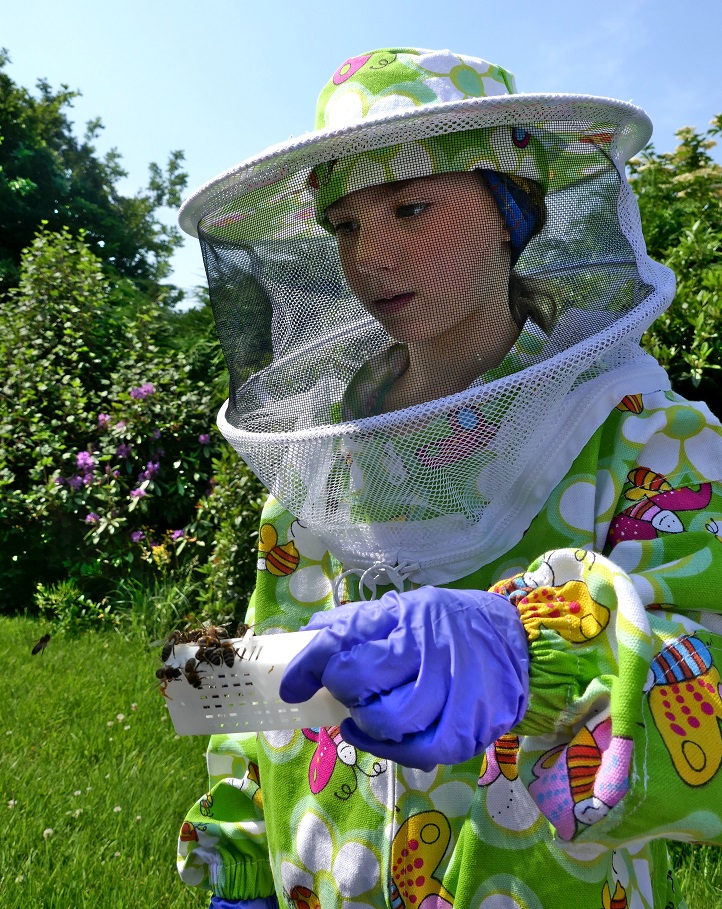
I explained in a previous blog that I would be introducing the new queen very slowly to the small colony in the nucleus box. This meant leaving the queen and 5 attendant workers in the cage for 3 days with the hatch tightly closed. After that we took out the cage and Connie smeared some water along the side of the cage before opening the hatch. The small gathering of workers on the cage indicated an interest in her majesty.
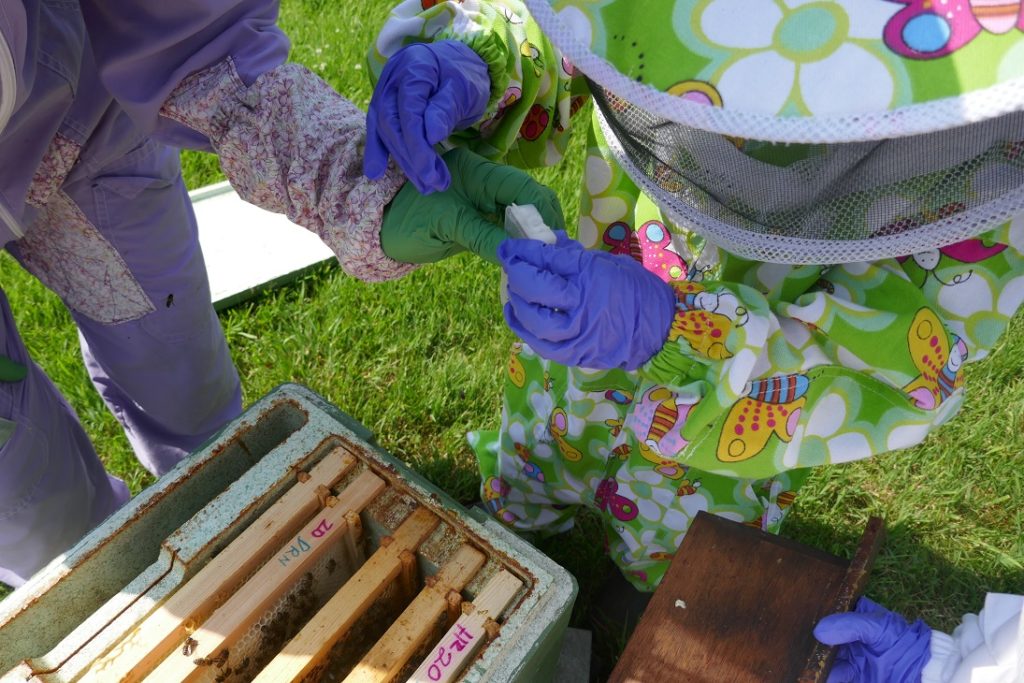
I did peep in next day through the Perspex cover to find that the bees had chewed through the fondant and released the queen.
Connie brought her Mum, Rosy, and wee sister, Evangeline, (4) with her to help us with beekeeping.
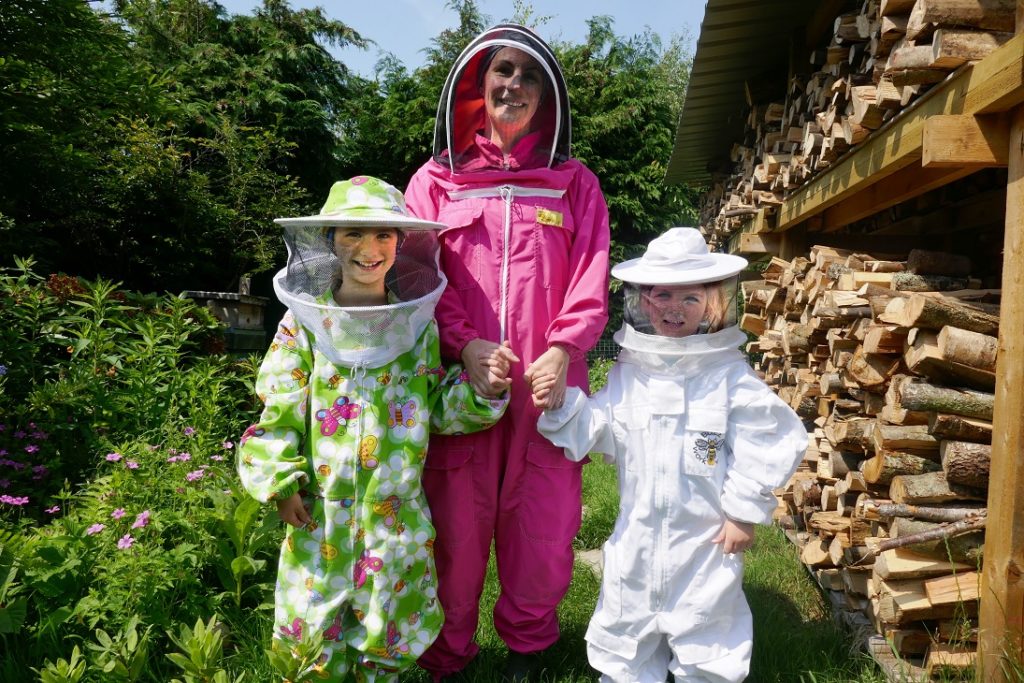
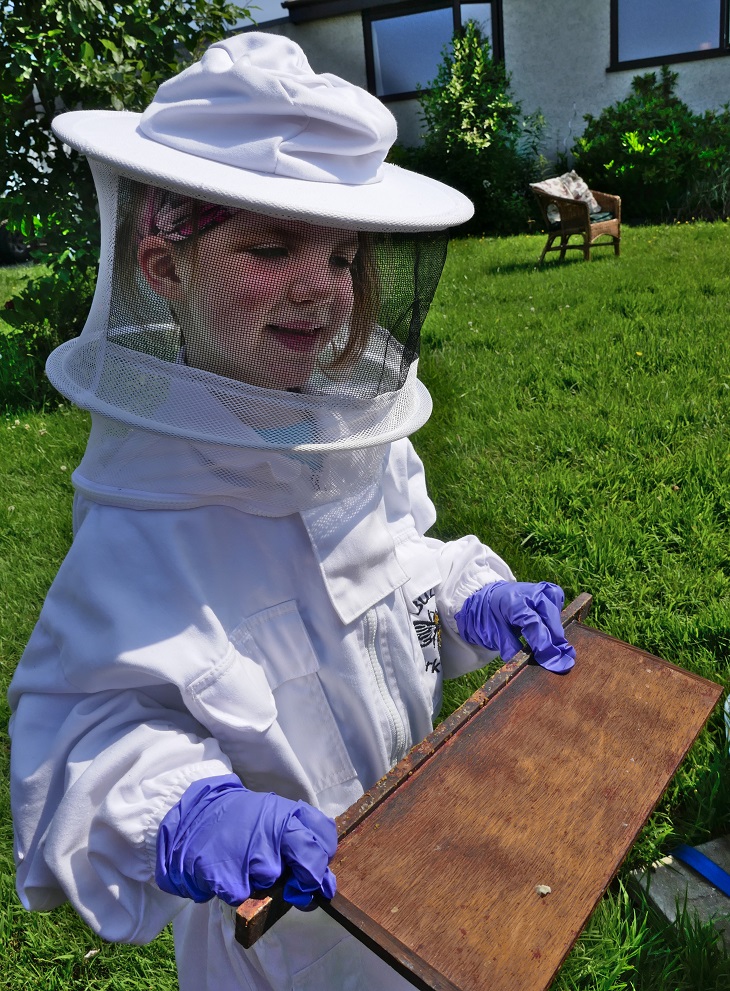
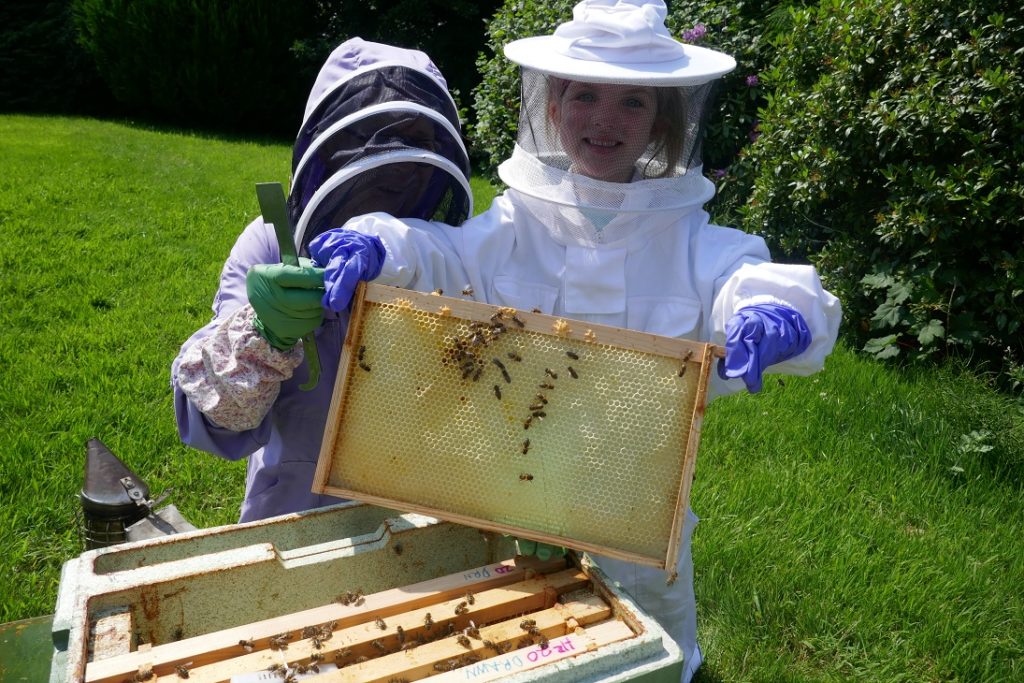
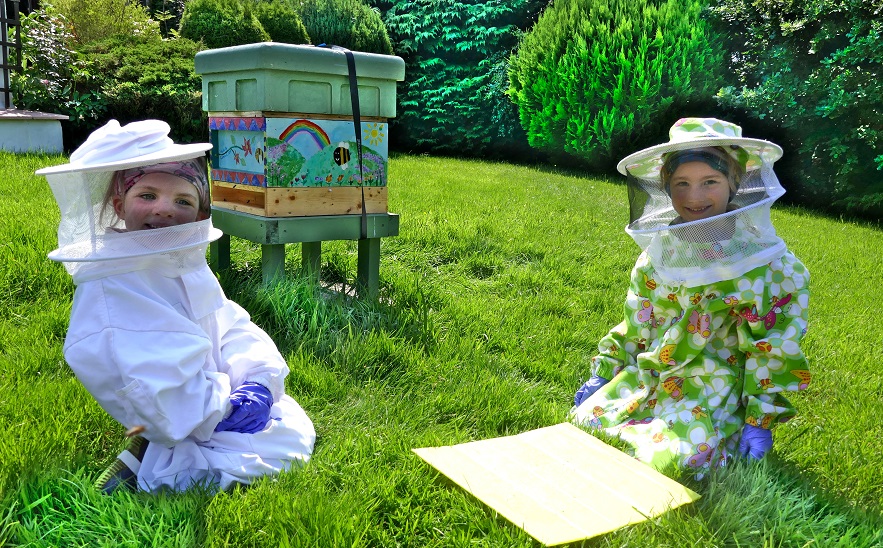
Silent Robbing.
However, no matter how careful you are things don’t always go according to plan. My worst worry happened alright! Despite the precautions of leaving the newly created nucleus shut in for 3 days before introducing the queen cage, and giving frames of stores rather than syrup, I noticed silent robbing.
There was no outward sign of it. No fighting or angry sounds from the nuc. I realised only when I opened it to check that the new queen was laying about 5 days after we opened the cage hatch. There was no food at all and the fondant that I’d given was gone. The queen hadn’t even started laying. So, I hung around the apiary watching till I’d worked out what was going on. I discovered that the parent colony was robbing out the nuc so I shut up the latter and took it into town to my bolt-hole at Cynthia’s.
Cynthia reports that so far all is well and they are replenishing their stores and foraging in town. She is feeding them ambrosia syrup and I’ll be checking on the queen soon. Obviously, I’m desperate to find out how she is but don’t want to stress them further by opening up too soon. The lesson for me is to get an out-apiary and take all nucs there because my own garden is too busy with 8 colonies to have space for vulnerable nucs.
Pine Martens.
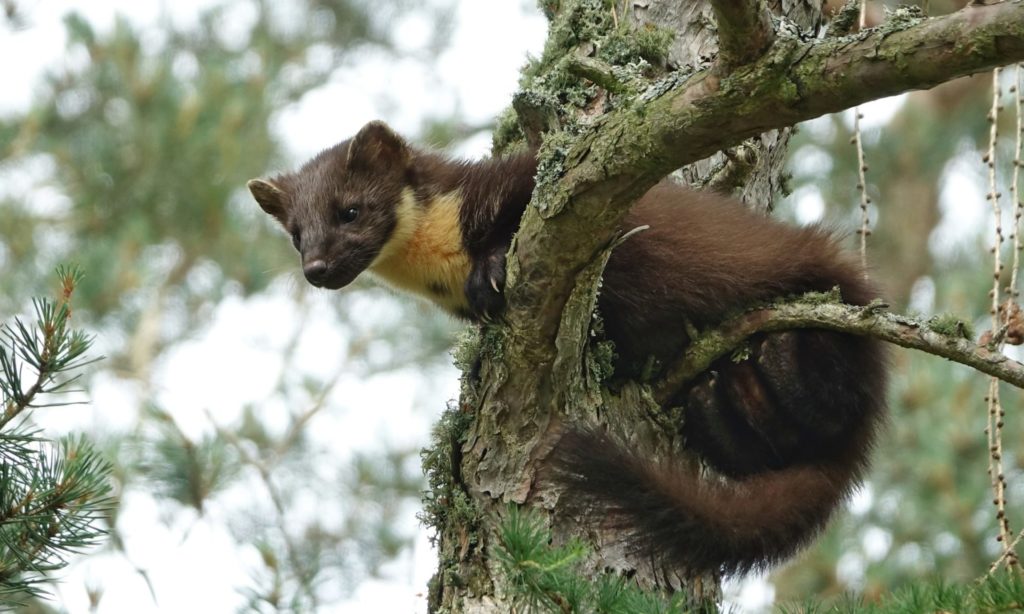
I had the amazing good fortune to meet two pine martens last week. But only because on an encounter with a red squirrel, Sciurus vulgaris, last month. I’d been walking up the road near the wild bee tree when suddenly down the road came a red squirrel at full tilt. I’d expected him to duck off into the bushes when he saw me but he kept on coming. I stood stock still on the right side of the road and he passed me on the left then he stopped at the statutory 2 meter- distance to eyeball me. I did the same and we locked eyes briefly before he carried on a little further then took a right dog leg turn into the forest.
During the spring I’d noticed a collection of branches and twigs high up in a Scots pine and wondered if this was actually a squirrel dray. After the encounter with the red squirrel, I went off to check this tree out again. As Linton and I were standing on the edges of a barley field I heard a scuffling sound. Out of the corner of my eye I saw a lot of fur passing under a row of low shrubby trees and gorse. It was followed by a long dark bushy tail. Then a scuffling on the bark of the nearest Scots pine gave it away. But, it wasn’t my squirrel, rather two pine martens! Were they the inhabitants of the nest up in the tree, or had they come to raid it? Pine martens are the only predators to take squirrels in the tree tops.
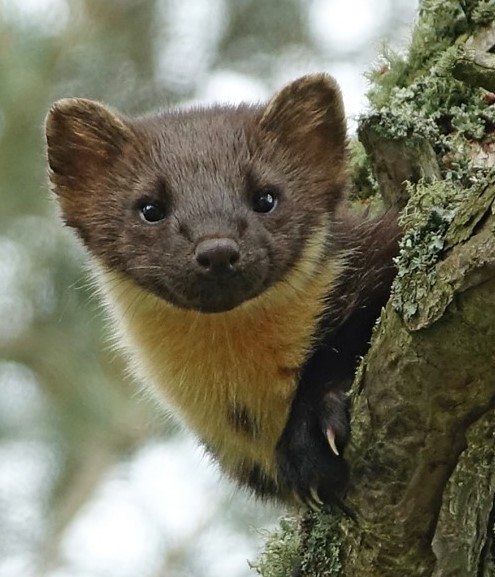
The birds were not impressed and they scolded loudly during the time we were admiring these fine creatures. Did you know that the collective noun for pine martens is a richness? All these amazing photographs have been taken by Linton. The martens were probably pretty cheesed off to have been waylaid and kept waiting for so long if they had been on a mission.
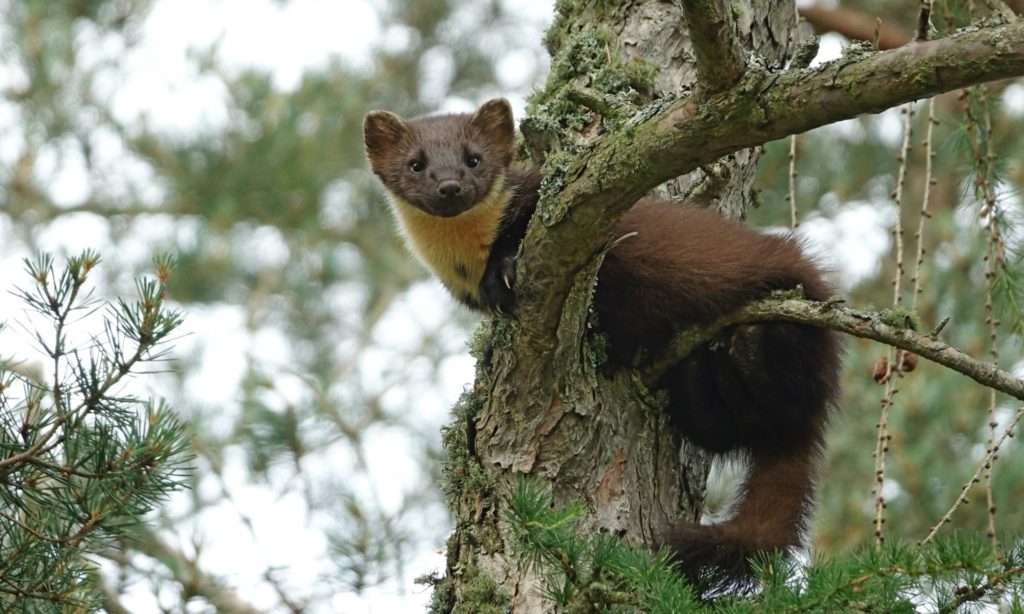
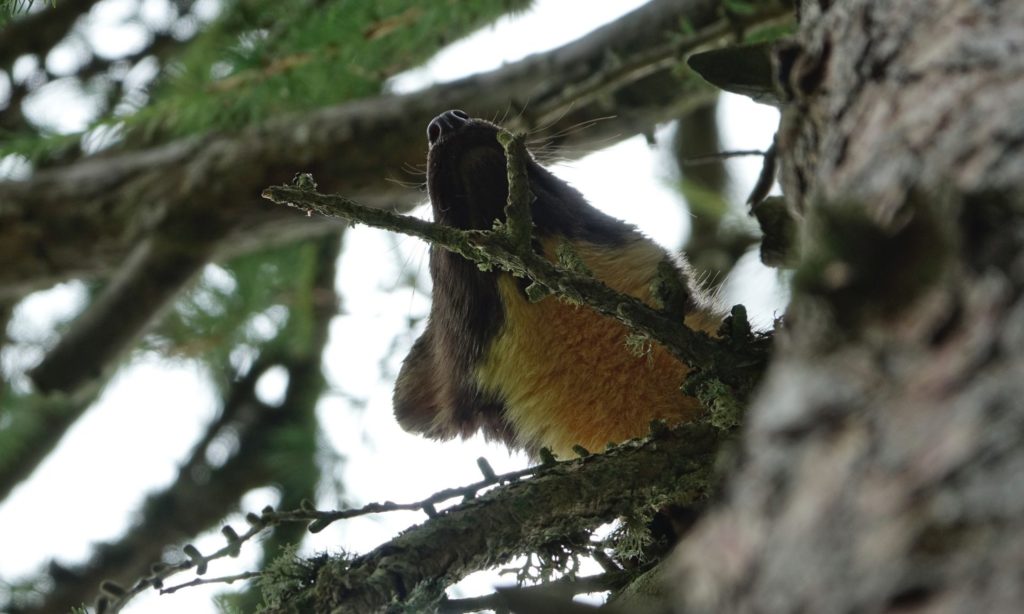
Bumble Bee B&B.
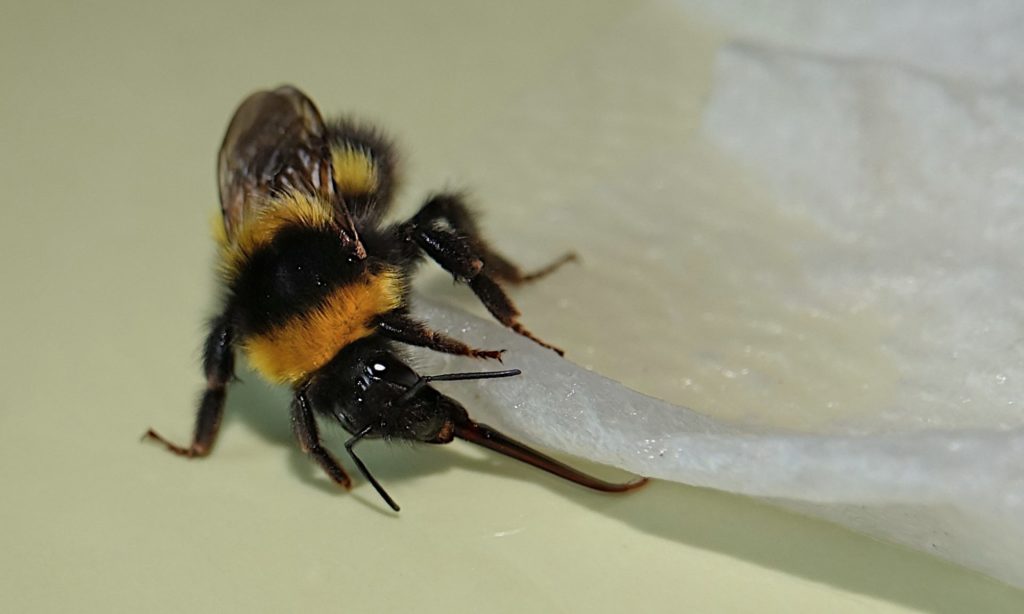
Returning from a late evening walk on a chilly day, I found this bee lying on the road in an exhausted state. So, I took her home for some sustenance. See her long tongue as she sucks up sugar syrup from a plate. Linton has the cheek to suggest that this is like him vacuuming under the rugs because I never bother lifting them!
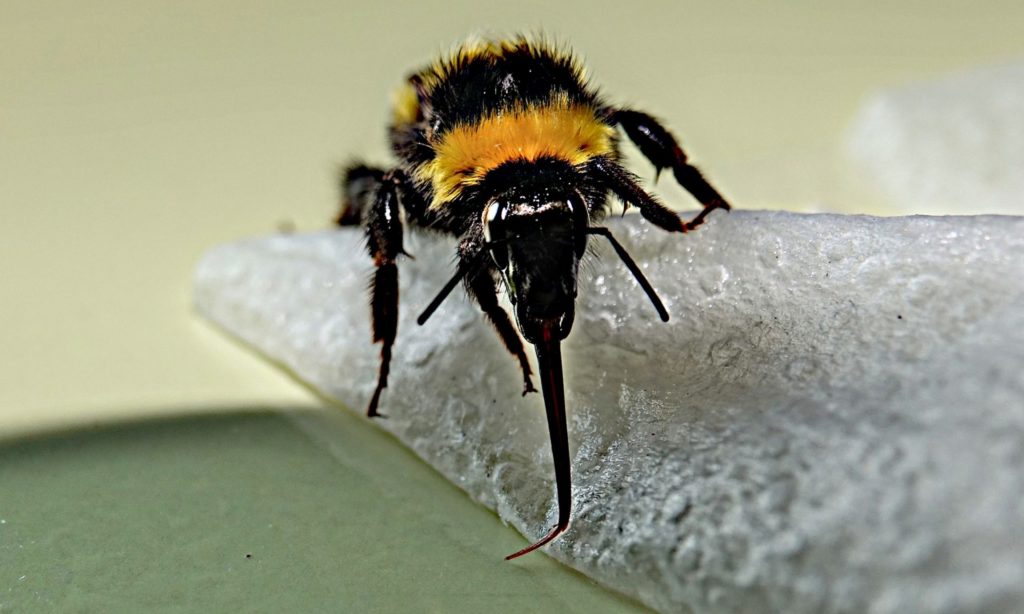

I’m pleased to report that following a hearty breakfast next day she flew off out of the open patio door. With hindsight I should perhaps have returned her to where I’d found her.
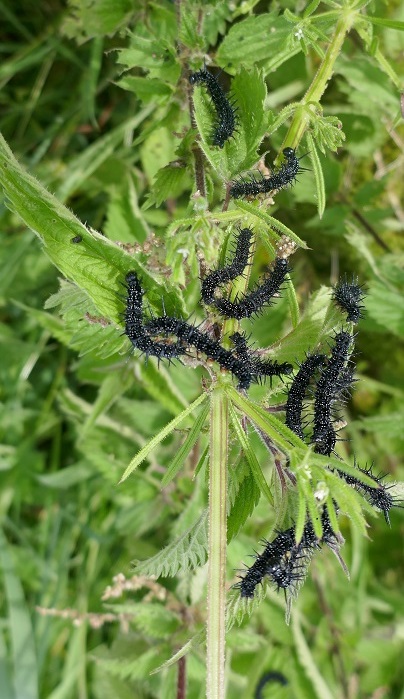
Getting off a narrow road to avoid an approaching car, I discovered these caterpillars on the sheltered side of an old stone dyke. The nettles were a seething mass of movement. It was fascinating to watch them stashing away the calories for soon they will pupate and emerge later in the month, or next, to delight us. This is one good reason to cultivate a few nettles in your garden.

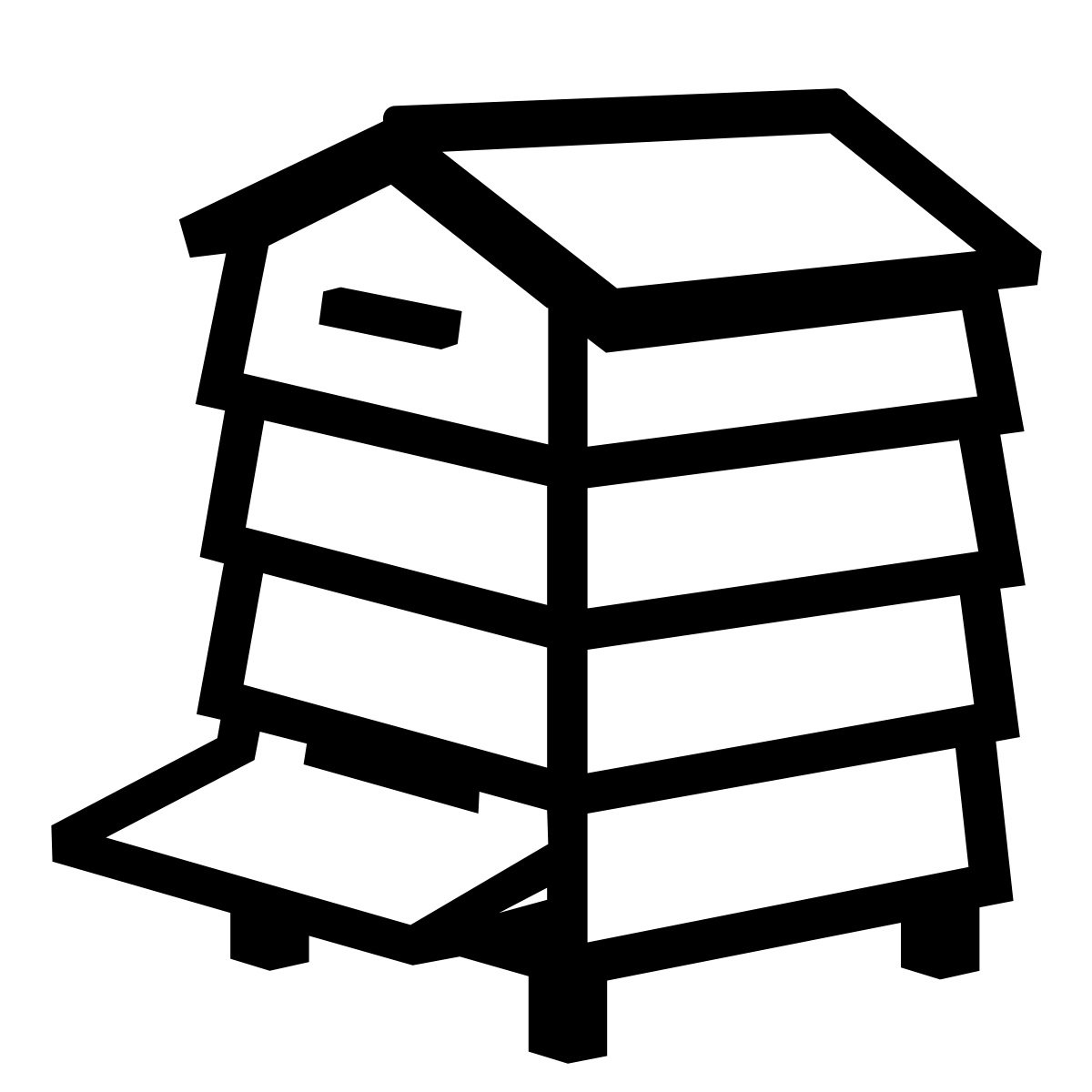
This is a beautiful blog, Ann and Linton. Thank you.
PS I’m out to examine the nettle patches 🙂
Thanks Margaret Anne. Wear your wellies. I got badly stung taking the photos!
Thank you Ann and Linton for all the interesting stories and pictures you shared. I’m pleased to see that you’ve so many lovely helpers! 🙂👍The Pine Marten is so beautiful.
Yes, Anna, I’m lucky with the helpers. Glad you liked the pine martens and other photos.
Wow, your photos are riveting, and the string of events described provides a lovely account of what is happening in your world.
Interesting concept, too: “silent robbing”. Silent in the sense that there was little commotion at the entrance of the hive being robbed? If so, then why do you think that this robbing activity was so inconspicuous? Was there plentiful forage in the fields?
That woodshed is good looking, too!
Thanks, Tom. Yes, no commotion at the hive entrance though too many comings and goings when other colonies were winding down for the day. I think that the problem arose because the nuc was in the same apiary as the parent colony. Even though the nuc was shut in for 3 days, some bees must have gone home and told their sisters about the bonanza (frames of stores) in the nuc. It’s true the weather wasn’t brilliant during that time, but the parent colony had plenty stores of its own. It demonstrates how tricky managing nuclei can be.